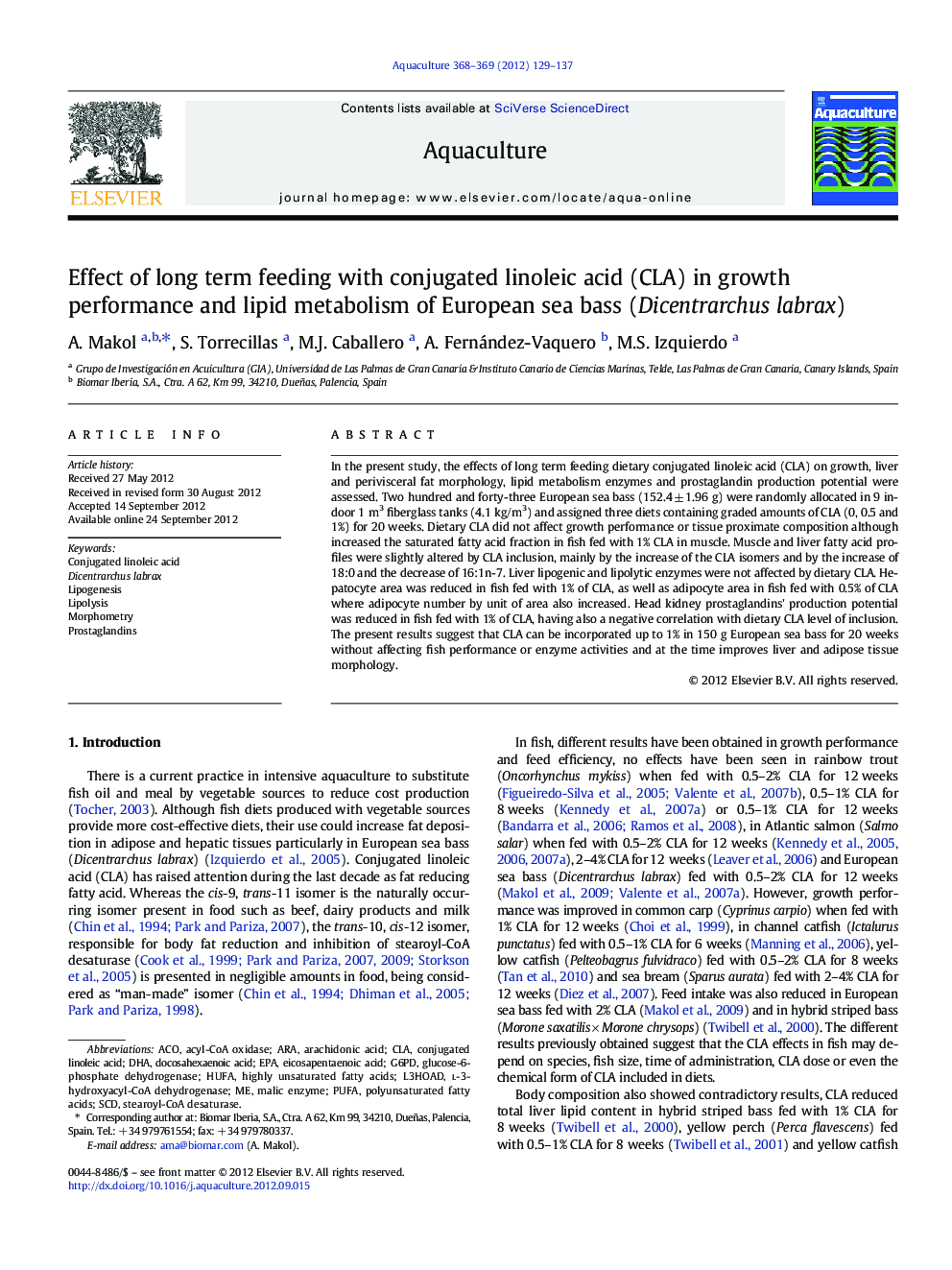| Article ID | Journal | Published Year | Pages | File Type |
|---|---|---|---|---|
| 2422419 | Aquaculture | 2012 | 9 Pages |
In the present study, the effects of long term feeding dietary conjugated linoleic acid (CLA) on growth, liver and perivisceral fat morphology, lipid metabolism enzymes and prostaglandin production potential were assessed. Two hundred and forty-three European sea bass (152.4 ± 1.96 g) were randomly allocated in 9 indoor 1 m3 fiberglass tanks (4.1 kg/m3) and assigned three diets containing graded amounts of CLA (0, 0.5 and 1%) for 20 weeks. Dietary CLA did not affect growth performance or tissue proximate composition although increased the saturated fatty acid fraction in fish fed with 1% CLA in muscle. Muscle and liver fatty acid profiles were slightly altered by CLA inclusion, mainly by the increase of the CLA isomers and by the increase of 18:0 and the decrease of 16:1n-7. Liver lipogenic and lipolytic enzymes were not affected by dietary CLA. Hepatocyte area was reduced in fish fed with 1% of CLA, as well as adipocyte area in fish fed with 0.5% of CLA where adipocyte number by unit of area also increased. Head kidney prostaglandins' production potential was reduced in fish fed with 1% of CLA, having also a negative correlation with dietary CLA level of inclusion. The present results suggest that CLA can be incorporated up to 1% in 150 g European sea bass for 20 weeks without affecting fish performance or enzyme activities and at the time improves liver and adipose tissue morphology.
► No effect on growth performance. ► Tissue fatty acid profile is modified. ► No effect on lipogenic and lipolitic enzymes. ► Liver and visceral fat morphology are improved. ► Potential prostaglandins production is reduced.
